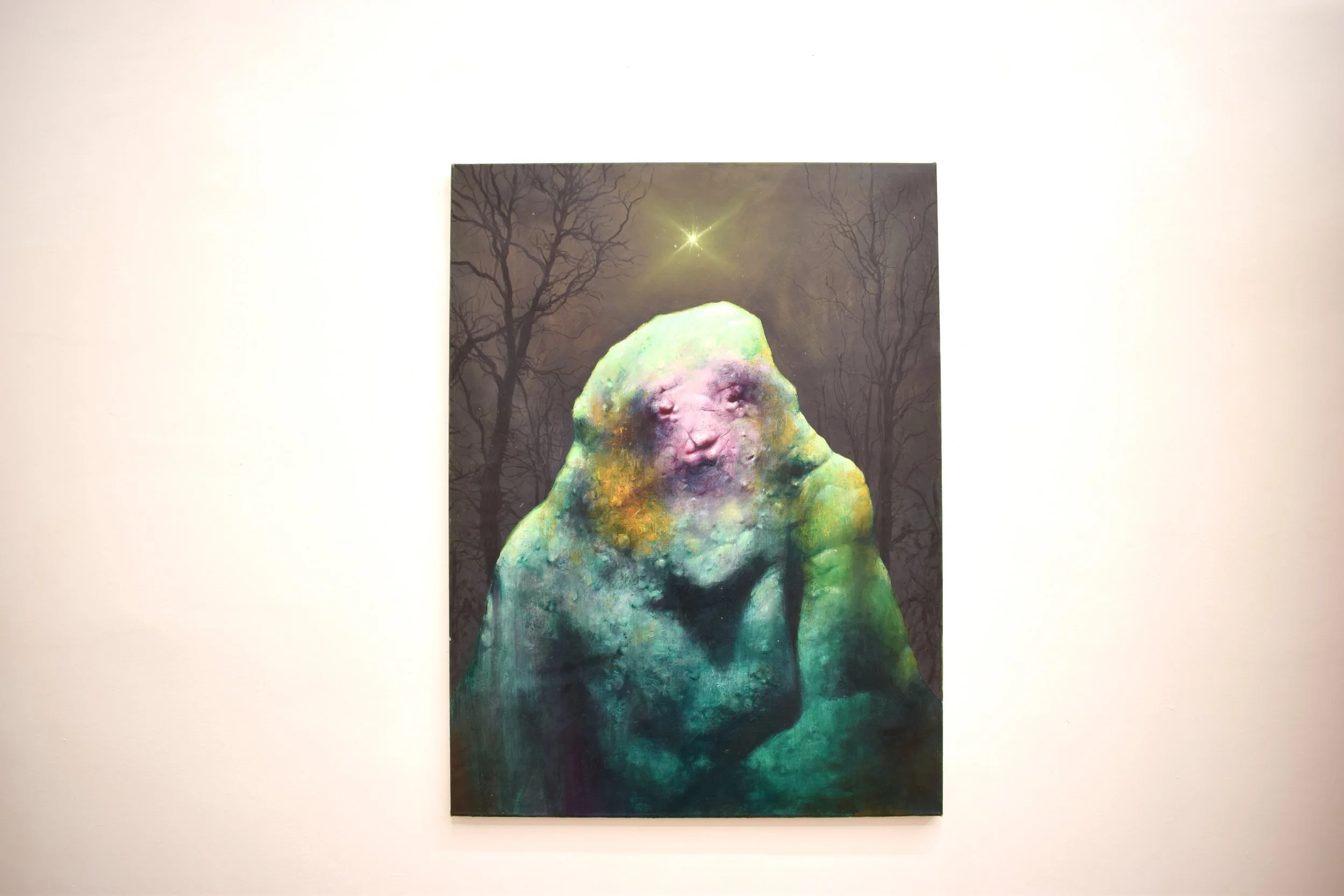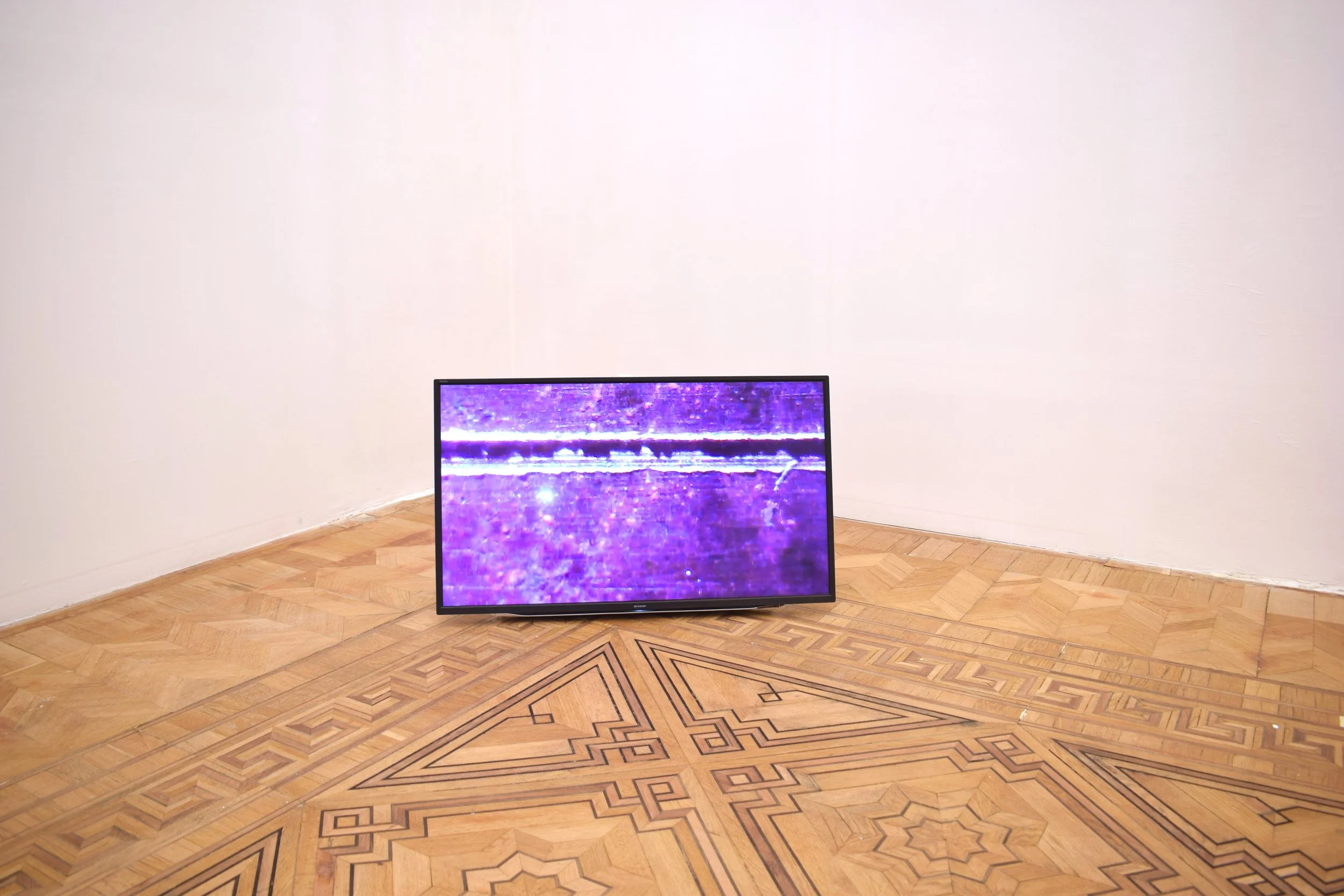YOUR HOME’S A WORLD AWAY
Tania CANDIANI | Nikolaus GANSTERER | Caterina GOBBI |
Suzanne TREISTER | Marcin ZAWICKI
curated by Goschka Gawlik & Arkadiusz Półtorak
Appropriately for the port city of Trieste, the exhibition is conceived as a contemporary Odyssey. In its course, one can encounter ignes fatui – the flickering lights that deceive travelers in the middle of the night; one can also hear the sound of a glacier, board a crystal spaceship or experience the reverberation of the inner Earth. The artists who accompany the audience on the journey, however, do not quite resemble the Odysseus of the Homeric epics. Navigating a world of inhuman entities, they do not strive to neutralise them. Rather, they record their eerie voices and, in harmony with them, sketch out itineraries for future sailors.
The Odyssey is sometimes thought of as an exemplary tale of the Enlightenment – the tale of a subject who, on his way to civilisation, traverses a sea full of mythical creatures, overcoming them along the way thanks to his wit. In the process, the traveler reasserts the boundaries of the modern world, which seems safe from myth and superstition. Let us imagine, however, a different Odyssey, whose trajectory is not determined by the homecoming – namely, a nautical “trip down the memory lane” of the old Odysseus. Tired of running errands and disillusioned by the barbarism of his own people, he decides to venture out on a lonely trip to revisit the ghosts of his past and for once appreciate the sirens' songs for what they really are. As is usual in similar situations, along the way he realises that some of the mythical creatures were a figment of his own imagination, while others are not as frightening as they once appeared to him. This speculative image of the Old Odysseus might reflect the ethos of today's artists who, largely disillusioned with the modern project, revisit modernity's engagements with its alleged others – although only to discover that the Enlightenment has constructed their mythical presence in a self-serving manner, mostly to support the tales of its own flourishing. Marcin Zawicki's paintings in the main room of MLZ Art Dep (Kraken, 2023; Ignis fatuus, 2023) hint at this thought ironically. Some of the fantastic creatures in his paintings resemble clumps of plastiglomerate – the rock-like masses that form from the plastics abandoned in the oceans (a veritable monstrosity of humans' making).
Standing at the threshold between modernity and myth, Zawicki deceives the audience as to whether they can recognise which side they stand on. In his work Global Players (2007), Nikolaus Gansterer takes a similar approach. The drawings that formed the basis for a mural exhibited at the Vienna Stock Exchange morph between cartographic sketches, economic diagrams, depictions of microscopic lifeforms and biomorphic abstraction. The leaning towards abstract form may seem typical of a modern artist – and yet, in Gansterer's drawings it is the avant-garde form that seems 'unmodern' against the backdrop of scientistic representation.
In the video Sonorous Object (2019), Tania Candiani reaches back to a time when the foundations for the Enlightenment and modern science were only being built. The protagonist of her work, the 16th and 17th-century physician and philosopher Robert Fludd, can easily be seen as one of the builders. At the same time, like many of the artist's inspirations, Fludd's thought seems to occupy a strange place between what the Enlightenment would have considered rational and its obverse. The film shows a spinning vinyl record (as seen under a microscope), the surface of which is engraved with Fludd's diagrams depicting the relationship between the microcosm and the macrocosm. However irrational the attempt to transform these images into sound using a turntable may seem, as a performative gesture it evokes the fluidity of the connections between different entities that Fludd held as true – not only as a man of science, but also as a dedicated occultist. Taking cue from the past hero, Candiani's work invites to let go of the rigid distinction between different modes of cognition – scientific and spiritual, visual and sonic, modern and ‘non-modern’ etc.
Suzanne Treister, whose prints from the Technoshamanic Systems: New Cosmological Models for Survivalseries (2020-ongoing) are spread throughout the gallery, does not care for the said distinctions herself. Referring to the history of cybernetics and twentieth-century counterculture, but also to the latest art and technology, the artist seeks to create a visual and conceptual language that expresses her ideas for a better future of the universe. In many ways, her proposals seem paradoxical – Treister holds fiercely anti-colonial views but remains committed to a Western vision of progress; she embraces science and technology, but also insists on closeness to nature. Her self-consciously mythical and deeply contradictory imagination wins her many polemicists. However, Treister's works raise valid questions about the possibility of integrating the ubiquitous legacy of modernity into contemporary proposals for de-colonisation and de-modernisation.
In the shadow of Treister's crystal spaceships, the exhibition features a crystal-like flower. It is part of Caterina Gobbi's work, Nessuno crede a ciò che non è mai successo (No one believes what never happened, 2023), which can be read as a message from inside a glacier. The glass sculpture depicts a plant that has been brought back to life by global warming after spending centuries in the alpine permafrost. Meanwhile, the accompanying soundtrack evokes the image of the glacier’s interior as flesh – replete with bodily fluids and moving organs. In bringing image and sound together, Gobbi suggests that intellect alone might not suffice to confront the greatest challenges of modernity as we know it, such as climate change. Rational thinking should go hand in hand with bodily perception, affect and conceptual creativity that only creative storytelling can provide – strutting the line between fact and fiction, reason and myth, struggle for identity and the courage to live radically, without feeling of assurance.





